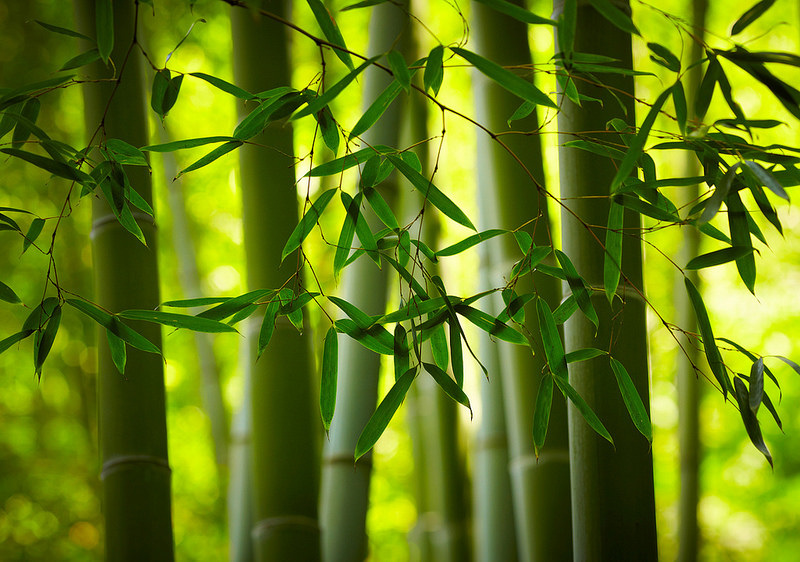Between Stockholm Syndrome and Lima Syndrome
Part 32: Aiki: the Source of Spiritual Dimension and Pacifism in Zen Martial Arts?

What will be exposed if we juxtapose the violence in Abrahamic religions with the spiritual dimension and pacifism in Zen Japanese martial arts? Etymologically, "martial" in "martial arts" derived from martialis (Latin: "dedicated to Mars, the god of war") which, according to Oxford means: "of or appropriate to war; warlike." There are indeed various kinds of martial arts practiced in many parts of the world; for example, capoeira in Brazil, muay thai in Thailand, pencak silat in Indonesia, krav maga in Israel, sambo in Russia, kali in the Philippines, kalarippayattu in South India, and let's just stop there. With all due respect to the virtues of these martial arts, they are beyond the scope of this short article. To stay within the discussion thread from previous posts, we will limit our exploration to the spiritual dimension and pacifism of Japanese empty-hand martial arts that are influenced by Zen Buddhism, such as karate, judo, aikido, and ju-jitsu.
The spiritual dimension and pacifism of Japanese empty-hand martial arts should not be taken for granted. After all, Japanese martial arts—whether influenced by Zen Buddhism or not—were initially developed solely to defend their practitioners against enemies, bandits and lawlessness during extended periods of numerous civil wars. The 10-year Onin civil war (1467–1477) initiated the Sengoku jidai (Warring States Period, 1467-1603) which was marked by social chaos, power vacuum, lawlessness, constant political intrigue and bloody conflicts between the Ashikaga shogunate and several daimyo (feudal lords) in many regions of Japan. The rise of the samurai class in the 12th century attested to the "live by the sword, die by the sword" lifestyle. As illustrated in the Smithsonian documentary Samurai Headhunters (2013), there was indeed a dark and brutal side of the Samurai warrior clans that is revealed by rare 16th century war documents.
In the 20th century, Japanese expansionism in Asia—historically marked by the brutal 1937 Nanking massacre (also known as the Rape of Nanking, in which the Japanese military murdered about 40,000 to over 300,000 Chinese civilians and committed barbaric rape and looting) as well as the 1941 Pearl Harbor attack—seemed to counter any argument that Zen Buddhism had any spiritual and pacifist effect whatsoever on the Japanese way of life. Yet we also need to remember that Zen Buddhism is but one "ism" among many "isms" in the Japanese culture which at one time or another may have included expansionism, fascism, imperialism, and Shinto.
In fact, if we focus our attention to post-World War II period—while the Sunnis and Shias are still locked in a bitter 1300-year conflict in the Middle East, Muslims are still persecuting Christians in Egypt, Pakistan and Indonesia, and while ISIS and Boka Haram are on a murderous rampage—have we ever heard about a particular school of Japanese martial arts fighting another in a futile contest to prove one is better than the other? Now let's have a simple quantitative experiment. Google "violence and religion" and you will get 324,000 entries. Now google "violence and martial arts" and you will get 53,000 entries. Still in doubt? Google "religious violence" and you will get 447,000 entries. Then google "martial arts violence" and you will get 9,330 entries. Amazon lists 9,438 books when you enter "religion and violence" in the search box, but only 500 books when you enter "martial arts and violence". (Of course "martial arts" in this experiment will include other non-Japanese martial arts.)
Numbers do not lie.
A juxtaposition reveals a lot.
When Chan Buddhism from China was introduced in Japan as Zen Buddhism in the 12th century (about the same time when the samurai class was initially developed), almost immediately it appealed to the samurai warriors. Unlike Abrahamic religions, Buddhism lacks an almighty God, therefore it does not have a concept of rewards or punishments on a supposedly Judgment Day. In Zen Buddhism, there are no sacred scriptures, no creed, no rigid dogma, no holy city. There is no allegiance to a supernatural being, not even to Buddha himself—who adamantly refused to be glorified and idolized—because liberation of the self is the full responsibility of an individual. After all, Zen Buddhism belief that Buddha's aim was not to save others—instead, to help them save themselves—distinguishes it from Mahayana and Theravada Buddhism. Not surprisingly, Zen Buddhism places a heavy emphasis on self-reliance, self discipline, individual effort, self-mastery and non-attachment—traits that were proven to be critically important for samurai warriors. Thus the austere and simple rituals of Zen Buddhism, as well as the core belief that salvation would come from within, provided an ideal philosophical background for the samurai code of conduct.
Central in this Zen Buddhist philosophy is the strategic concepts of aiki. A literal translation of aiki, is "joining energy", but this is considered to be a gross simplification. A more contextual translation is "the principle of matching an opponent in order to defeat him." It is the concept of "matching" or "joining" or even "harmonizing" with an opponent that rather complicates the interpretation of aiki among non-Japanese speakers. (Not that I speak any Japanese nor fully understand it!) It is not considered aiki when a fighter matches or counters the opponent in a clash of force, possibly even resulting in mutual death. However, it is considered aiki when a fighter physically and mentally joins the opponent for the express purpose to avoid a direct clash of force. Thus aiki is achieved by "first joining with the motion of the opponent (physically) as well as the intent (mentally), then overcoming the will of the opponent, redirecting their motion and intent."
As explained by Tokimune Takeda (1916-1993), aiki is "to pull when you are pushed, and to push when you are pulled. It is the spirit of slowness and speed, of harmonizing your movement with your opponent's ki. Its opposite, kiai, is to push to the limit, while aiki never resists." While the principle of aiki was initially used for destructive purposes to kill an opponent, modern Japanese martial arts like karate, judo, aikido, and ju-jitsu use the principle to control and defeat one's opponent without harming him. In the next post we are going to explore how this concept of aiki has even transcended from the physical into the spiritual domain.
[To be continued.]
Johannes Tan, Indonesian Translator & Conference Interpreter
The spiritual dimension and pacifism of Japanese empty-hand martial arts should not be taken for granted. After all, Japanese martial arts—whether influenced by Zen Buddhism or not—were initially developed solely to defend their practitioners against enemies, bandits and lawlessness during extended periods of numerous civil wars. The 10-year Onin civil war (1467–1477) initiated the Sengoku jidai (Warring States Period, 1467-1603) which was marked by social chaos, power vacuum, lawlessness, constant political intrigue and bloody conflicts between the Ashikaga shogunate and several daimyo (feudal lords) in many regions of Japan. The rise of the samurai class in the 12th century attested to the "live by the sword, die by the sword" lifestyle. As illustrated in the Smithsonian documentary Samurai Headhunters (2013), there was indeed a dark and brutal side of the Samurai warrior clans that is revealed by rare 16th century war documents.
In the 20th century, Japanese expansionism in Asia—historically marked by the brutal 1937 Nanking massacre (also known as the Rape of Nanking, in which the Japanese military murdered about 40,000 to over 300,000 Chinese civilians and committed barbaric rape and looting) as well as the 1941 Pearl Harbor attack—seemed to counter any argument that Zen Buddhism had any spiritual and pacifist effect whatsoever on the Japanese way of life. Yet we also need to remember that Zen Buddhism is but one "ism" among many "isms" in the Japanese culture which at one time or another may have included expansionism, fascism, imperialism, and Shinto.
In fact, if we focus our attention to post-World War II period—while the Sunnis and Shias are still locked in a bitter 1300-year conflict in the Middle East, Muslims are still persecuting Christians in Egypt, Pakistan and Indonesia, and while ISIS and Boka Haram are on a murderous rampage—have we ever heard about a particular school of Japanese martial arts fighting another in a futile contest to prove one is better than the other? Now let's have a simple quantitative experiment. Google "violence and religion" and you will get 324,000 entries. Now google "violence and martial arts" and you will get 53,000 entries. Still in doubt? Google "religious violence" and you will get 447,000 entries. Then google "martial arts violence" and you will get 9,330 entries. Amazon lists 9,438 books when you enter "religion and violence" in the search box, but only 500 books when you enter "martial arts and violence". (Of course "martial arts" in this experiment will include other non-Japanese martial arts.)
Numbers do not lie.
A juxtaposition reveals a lot.
When Chan Buddhism from China was introduced in Japan as Zen Buddhism in the 12th century (about the same time when the samurai class was initially developed), almost immediately it appealed to the samurai warriors. Unlike Abrahamic religions, Buddhism lacks an almighty God, therefore it does not have a concept of rewards or punishments on a supposedly Judgment Day. In Zen Buddhism, there are no sacred scriptures, no creed, no rigid dogma, no holy city. There is no allegiance to a supernatural being, not even to Buddha himself—who adamantly refused to be glorified and idolized—because liberation of the self is the full responsibility of an individual. After all, Zen Buddhism belief that Buddha's aim was not to save others—instead, to help them save themselves—distinguishes it from Mahayana and Theravada Buddhism. Not surprisingly, Zen Buddhism places a heavy emphasis on self-reliance, self discipline, individual effort, self-mastery and non-attachment—traits that were proven to be critically important for samurai warriors. Thus the austere and simple rituals of Zen Buddhism, as well as the core belief that salvation would come from within, provided an ideal philosophical background for the samurai code of conduct.
Central in this Zen Buddhist philosophy is the strategic concepts of aiki. A literal translation of aiki, is "joining energy", but this is considered to be a gross simplification. A more contextual translation is "the principle of matching an opponent in order to defeat him." It is the concept of "matching" or "joining" or even "harmonizing" with an opponent that rather complicates the interpretation of aiki among non-Japanese speakers. (Not that I speak any Japanese nor fully understand it!) It is not considered aiki when a fighter matches or counters the opponent in a clash of force, possibly even resulting in mutual death. However, it is considered aiki when a fighter physically and mentally joins the opponent for the express purpose to avoid a direct clash of force. Thus aiki is achieved by "first joining with the motion of the opponent (physically) as well as the intent (mentally), then overcoming the will of the opponent, redirecting their motion and intent."
As explained by Tokimune Takeda (1916-1993), aiki is "to pull when you are pushed, and to push when you are pulled. It is the spirit of slowness and speed, of harmonizing your movement with your opponent's ki. Its opposite, kiai, is to push to the limit, while aiki never resists." While the principle of aiki was initially used for destructive purposes to kill an opponent, modern Japanese martial arts like karate, judo, aikido, and ju-jitsu use the principle to control and defeat one's opponent without harming him. In the next post we are going to explore how this concept of aiki has even transcended from the physical into the spiritual domain.
[To be continued.]
Johannes Tan, Indonesian Translator & Conference Interpreter

 RSS Feed
RSS Feed